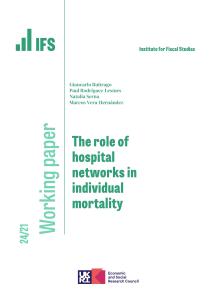Pain and mortality in older adults: The influence of pain phenotype.
- Peter Croft
- John McBeth
- Diane Smith
- Ross Wilkie
Published on 7 June 2017
Objective Moderate to severe chronic pain affects one in five adults. Pain may increase the risk of mortality but the relationship is unclear. This study investigated whether mortality risk was influenced by pain phenotype, characterised by pain extent or pain impact on daily life. Methods The study population was drawn from two large population cohorts of adults aged ≥50 years; the English Longitudinal Study of Ageing (ELSA) (n=6324) and the North Staffordshire Osteoarthritis Project (NorStOP) (n=10985). Survival analyses (Cox's proportional hazard models) estimated the risk of mortality in participants reporting "any pain" and then separately according to the extent of pain (total number of pain sites; widespread pain according to American College of Rheumatology (ACR) criteria; widespread pain according to Manchester criteria) and pain impact on daily life (pain interference; and often troubled with pain). Models were cumulatively adjusted for age, sex, education and wealth/adequacy of income. Results After adjustments, the report of any pain (MRR 1.06, 95% CI (0.95, 1.19)) or having widespread pain (ACR 1.07 (0.92, 1.23) or Manchester 1.16 (0.99, 1.36)) was not associated with an increased risk of mortality. Participants who were often troubled with pain (1.29 (1.12, 1.49)) and those that reported "quite a bit" (1.38 (1.20,1.59)) and "extreme" (1.88 (1.54, 2.29)) pain interference had an increased risk of all-cause mortality. Conclusion Pain that interferes with daily life, rather than pain per se was associated with an increased risk of mortality. Future studies should investigate the mechanisms through which pain increases mortality risk. This article is protected by copyright. All rights reserved.








